I squint my eyes in a vain attempt to see more clearly. The water is so dark, so still, that it perfectly reflects the paperbark branches overhanging the riverbank. I struggle to identify where the water ends and the shore begins.
My field of view is filled with nothing but nature. I can hear only birdsong and the odd puff of wind moving through the sedges. There’s a soft scent of tea tree in the air.
If it wasn’t for the kayak I was sitting in, I could easily convince myself I’d gone back in time. The modern world feels like a distant memory.
Where am I? Noosa!
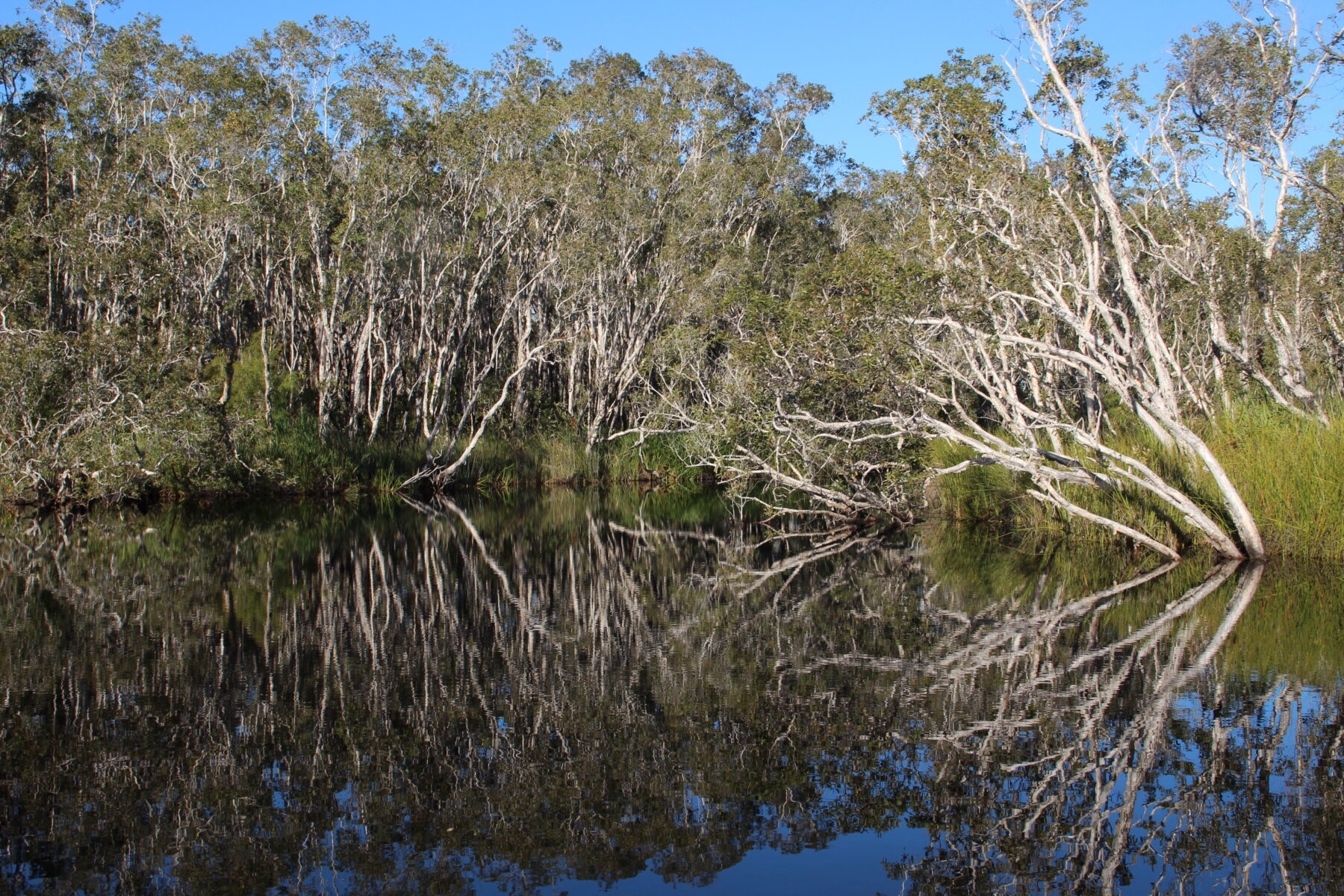
The other side of Noosa
Noosa is a resort area on the northern tip of the Sunshine Coast in South East Queensland. But, beyond the luxe tourist mecca of Noosa Heads’ Main Beach and Hastings Street, Noosa boasts more natural beauty than it does lavish lifestyles.
So impressive are its natural attributes and their management that the shire has been a designated UNESCO Biosphere Reserve since 2007 in recognition as a ‘site of excellence’ where a balance between environmental conservation and sustainable human development has been, and continues to be, achieved.
According to the Noosa Biosphere Reserve Foundation, the region is home to 637 native animal species (including 44 per cent of Australia’s native bird species) and 2224 native plant species, with 42 per cent of the 868sq.km shire protected as either national park, reserve or conservation area.
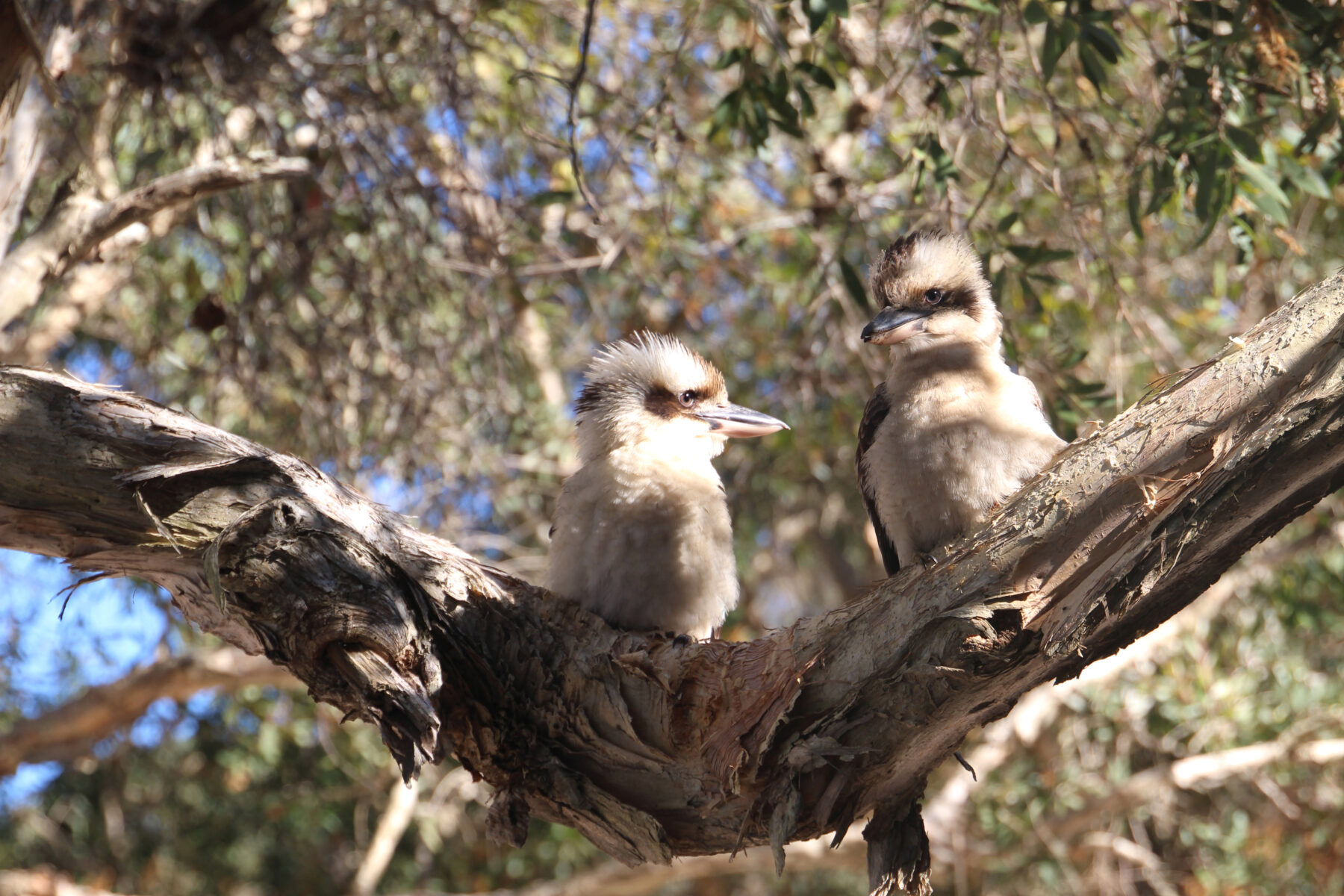
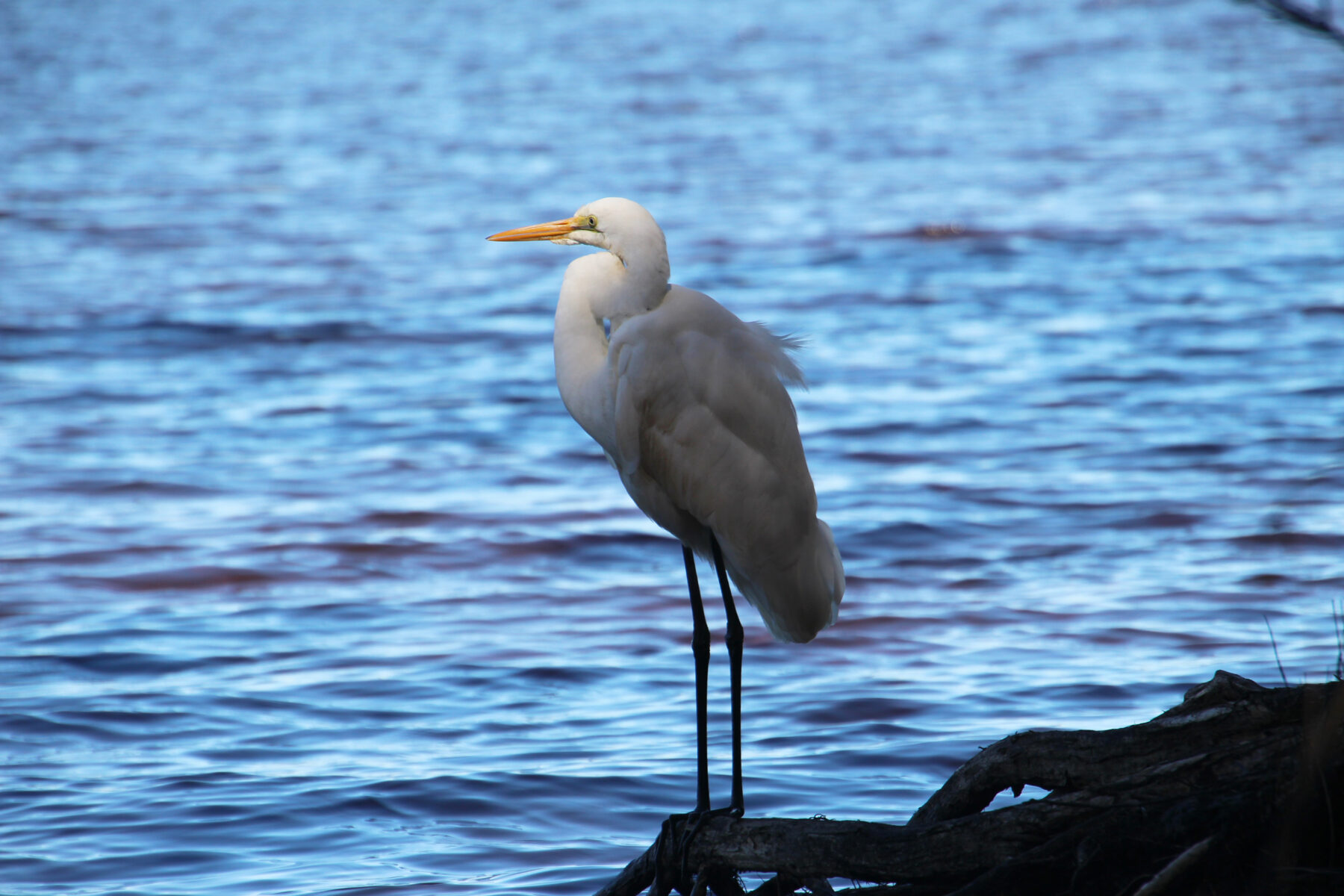
What’s more, you don’t have to stray far from town to find yourself seemingly in the middle of nowhere.
Which brings me back to this one specific location, in this one particular moment in time, where I’m transfixed by these striking reflections.
Less than 20km as the crow flies from Noosa Heads, I am in the heart of the Noosa Everglades, partaking in a guided kayak tour with Kanu Kapers – a sustainable ecotourism operation that’s been taking visitors here for more than 20 years.
What are the Noosa Everglades?
“The definition is actually challenging to narrow down,” explains my guide. He’s not wrong. During my time in Noosa, in talking to numerous tourism operators, long-term locals and even park rangers, no one has given me the same answer.
In short, I learn these unique wetlands were named ‘Noosa Everglades’ many decades ago because of their similarities to the United States’ world-famous everglades in Florida.
Both are large freshwater ecosystems sharing a similar climate and latitude with low tracts of swampy land and extremely slow-moving tides. They are both characterised by branching waterways with constant freshwater flowing through the system, and they both provide habitat for an abundance of fauna and flora species.
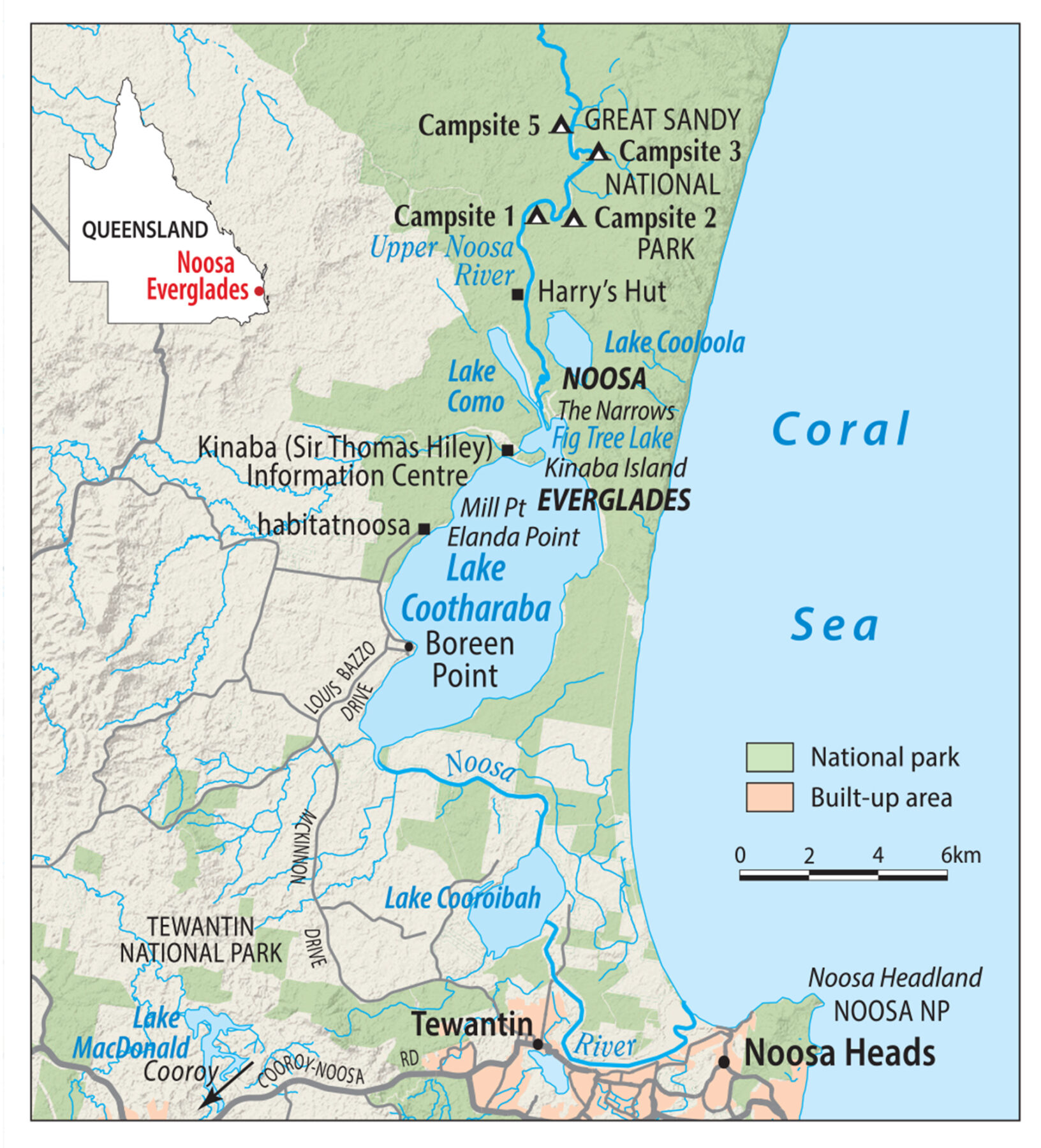
The boundaries of the Noosa Everglades also prove impossible to categorically define, but the most popular consensus is that they begin about 10km upstream from the Noosa River mouth, just past Lake Cootharaba, the last saltwater lake in the catchment.
This is also where my everglades adventure begins – on the north-western bank where my small group, accompanied by our local guides, launch our kayaks into the lake.
The wetlands are only accessible by water. Boaters must adhere to strict regulations including no-wash zones, and cannot enter the upper catchments, where only canoes and kayaks are permitted.
After a paddle across this large shallow lake – with a bonus estuary stingray sighting – we reach the entrance to the Upper Noosa River. It is here we say goodbye to the open water. It’s also where we leave salt water behind.
From here we enter the Noosa Everglades – a labyrinth of narrows, tributaries and shallow lakes, protected within Great Sandy National Park. Transitioning from brackish to freshwater, the exact point where one becomes the other fluctuates, depending on recent rainfall.

Beneath the water, conditions are just right to accommodate a plethora of native fish and crustacean species. Eelgrass, tree roots and fallen branches provide nurseries for juvenile fish, including that of the native Australian bass and longfin eel, as well as the endangered honey blue-eye and Oxleyan pygmy perch.
On the banks, dragonflies hover in the sedges, and if you look hard enough you might see a swamp crayfish, mangrove mud crab, keelback (a freshwater snake), or even a snake-necked turtle.
These everglades are also a bird-watcher’s dream. Many twitchers visit these wetlands with a local bird guidebook in hand and a wish-list of rare species they hope to cross off. The heathlands provide prime habitat for fairy wrens and ground-dwelling birds such as quails and ground parrots.
During my journey we see bush stone-curlews, eastern great egrets and the usual suspects – brush turkeys – on the shore. Pelicans fly overhead, while little black cormorants dry their feathers on partially submerged branches. A honeyeater darts through tall grass and even a cheeky azure kingfisher makes an appearance.
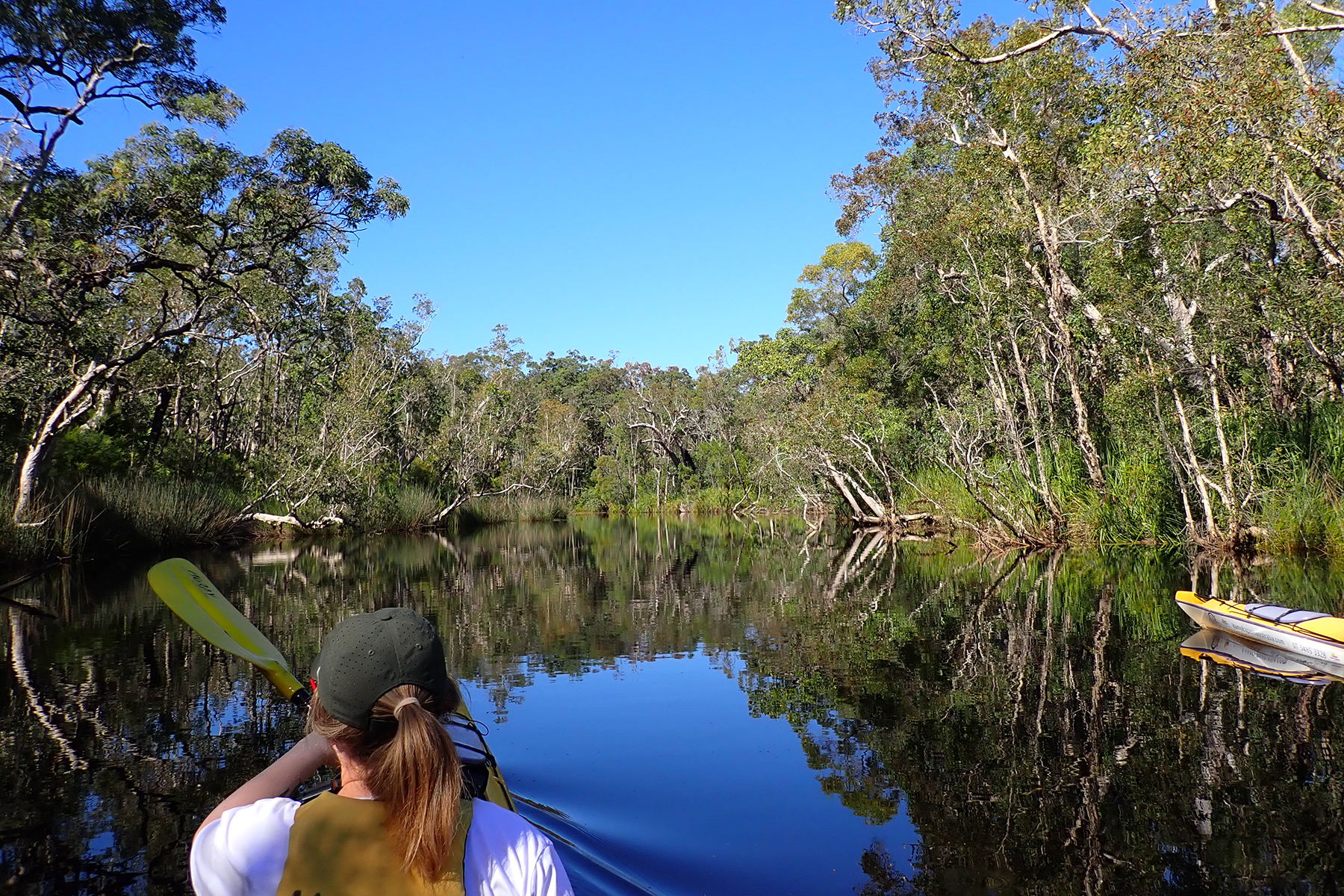
But for me, it’s the vegetation here that steals the show. I’ve never seen so many quintessentially Australian plant species packed together so tightly in one location. There are eucalypts, melaleucas, bloodwoods, banksias, native hibiscus and cabbage trees. It’s like looking at a ‘who’s who’ of iconic native flora.
Incredibly, despite a history of timber logging and sand mining in the area, this vegetation has grown back, restoring this scene to what it would have looked like before colonisation.
Tea tree tannins
Pushing further upstream we reach ‘The Narrows’ – 2.5km of thin waterways winding through the wetlands. Dubbed the ‘River of Mirrors’, it is this section that provides the most spectacular scenes – where still, dark, syrupy-looking water reflects forest and sky.

It is the melaleucas (also known as tea trees or paperbarks) that stain the water with their warm brown-hued tannins.
These melaleuca forests also trap sediments and pollutants, filtering water before it enters the river system.
As we navigate our way through these narrows, our guide tells us stories of the Traditional Owners, the Kabi Kabi people.
With a sacred connection to these wetlands going back tens of thousands of years, records show the Kabi Kabi migrated a lot less than other First Nations groups, due to the bounty of resources available to them here.
I stare into the dense melaleuca forest, hearing about the bush medicines that cured their ails, the tucker that sustained them and the landscape that protected them.
But while we chat and learn from our guides about the natural and cultural history of this special place, we also take time to fall silent, to stop paddling and fully immerse ourselves in our surroundings.
I understand why the Kabi Kabi didn’t stray far. Where else would you want to be?
THE EVERGLADES, YOUR WAY
Access to the Noosa Everglades is via Boreen Point or Elanda Point, on the shores of Lake Cootharaba – a 30-minute drive from Noosa Heads and a two-hour drive from Brisbane.
Guided kayak tours are only available with the eco-certified business Kanu Kapers, which offers half- and full-day tours, including lunch and a swim. They also offer multi-day tours with overnight camping.
Canoes, kayaks and boats can be hired from numerous operators. Self-guided maps are also available.
Designated camp spots are dotted along the riverbanks, maintained and operated by Queensland Parks and Wildlife Service (permits apply). Many of these are high upstream, only accessible by kayak, canoe, or foot.
There are numerous bush-walking tracks throughout the Cooloola Recreation Area that encompasses the everglades. Boardwalks cover the most sensitive areas.
If limited time is a factor, or if sitting back and relaxing is more your style, Everglades Eco Safaris offer morning and sunset boat cruises, with complimentary morning tea or wine and beer for extra indulgence.
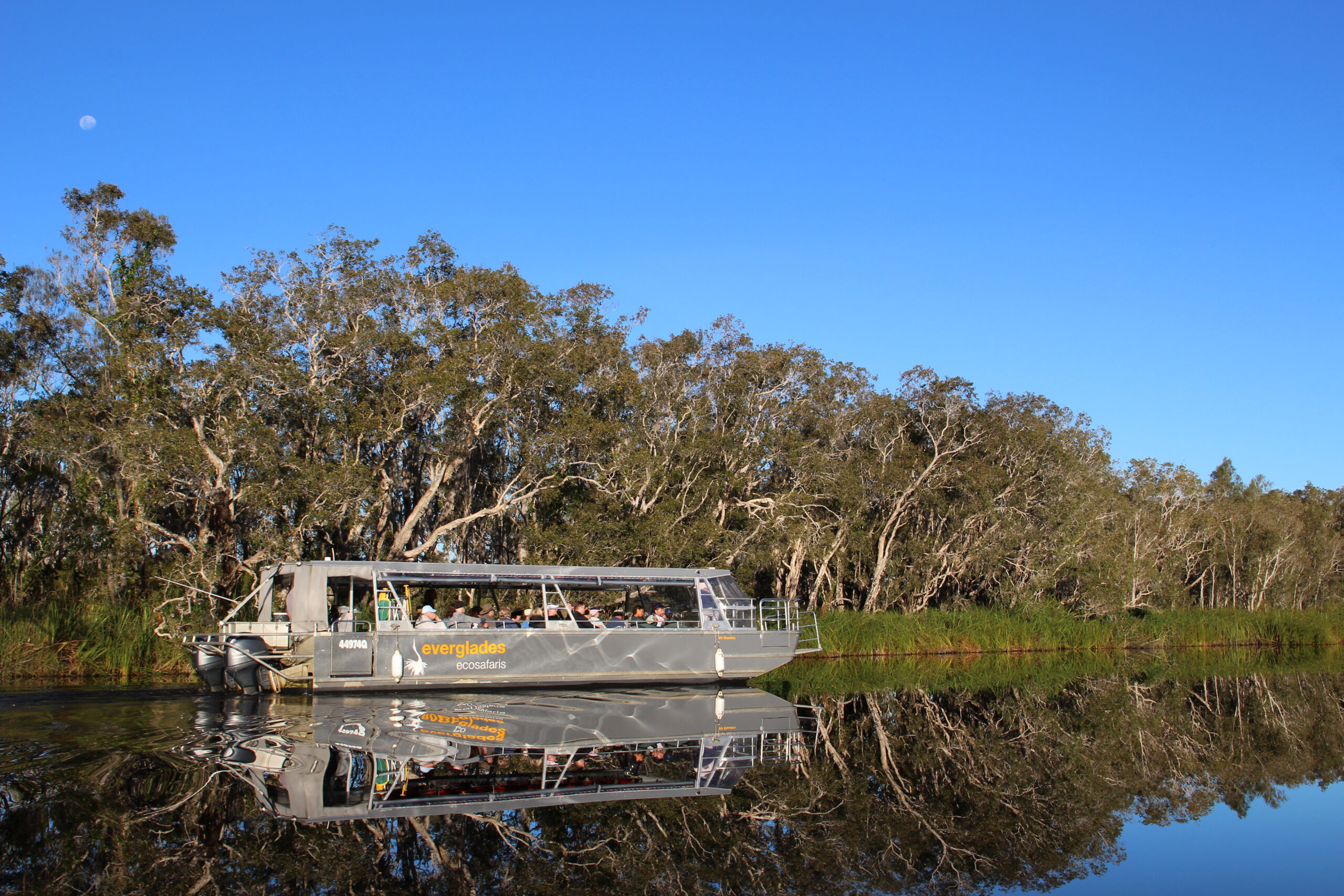
Image credit: Candice Marshall
Candice Marshall travelled courtesy of Tourism Noosa.
